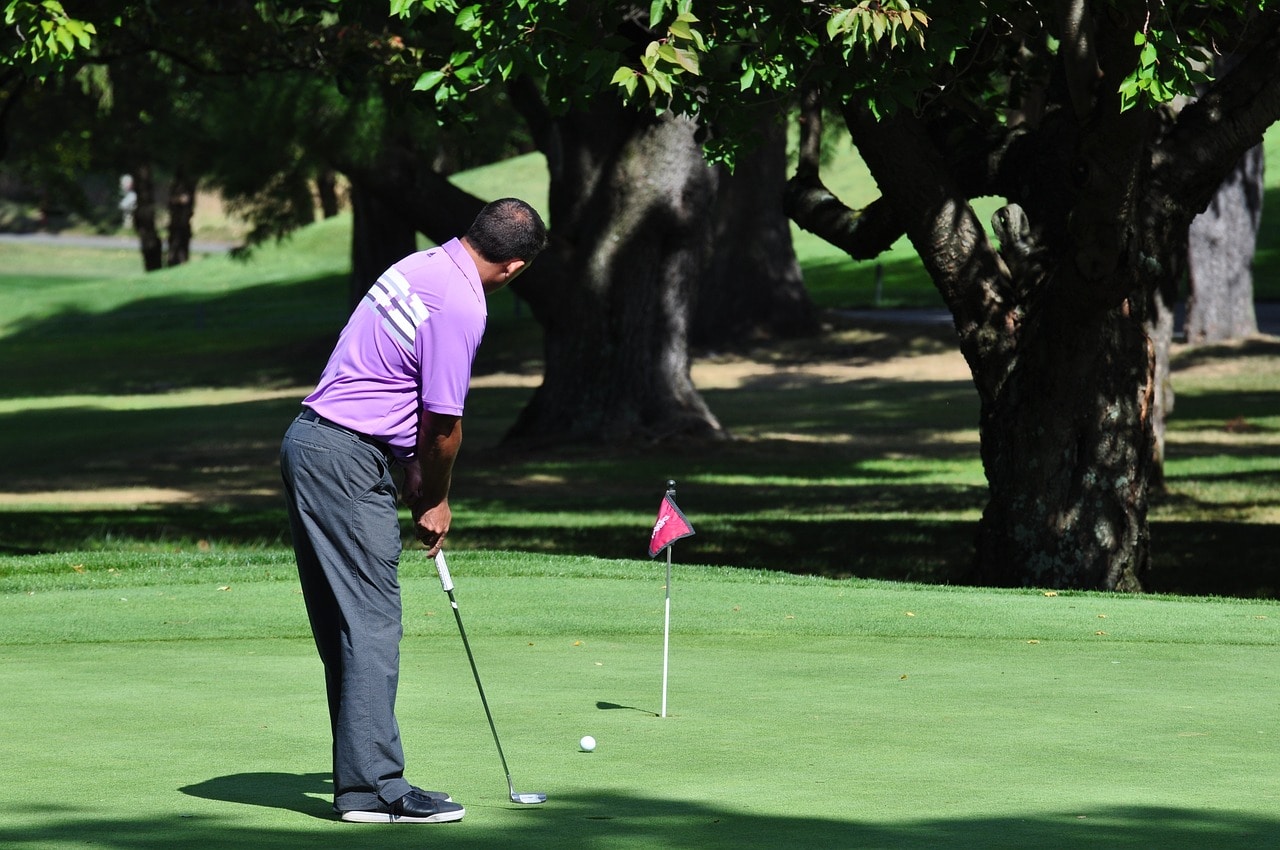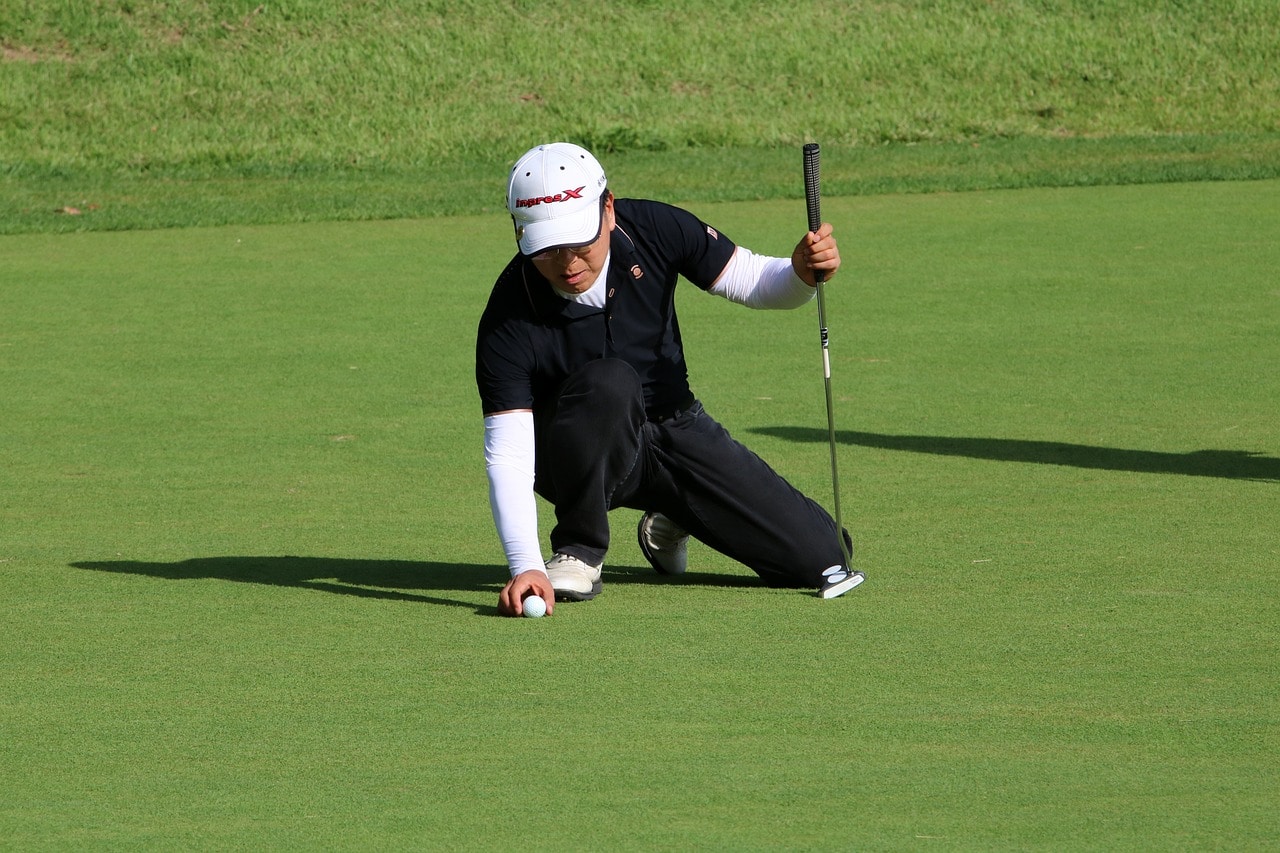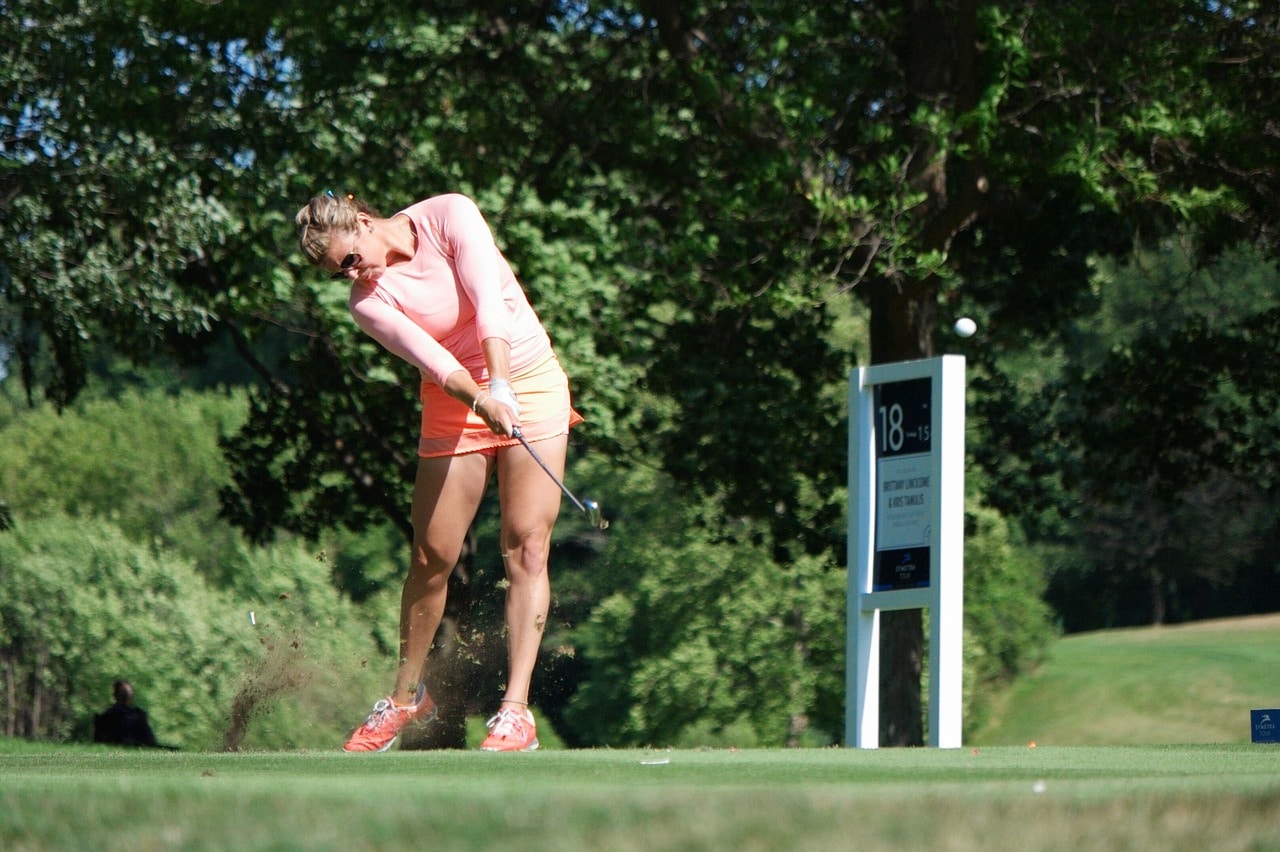How To Find The Right Length For Your Golf Clubs
Table of Contents
- 1 How To Find The Right Length For Your Golf Clubs
- 2 Determining Your Height And Arm Length
- 3 Choosing The Appropriate Loft For Your Clubs
- 4 Taking Into Account Your Swing Speed
- 5 Considering Your Body Type And Flexibility
- 6 Looking At Your Ball Flight
- 7 Selecting The Right Shaft Flex
- 8 Deciding On The Head Weight Of Your Clubs
- 9 Conclusion
In the game of golf, having a set of clubs with the right length can be like finding the Holy Grail. It may seem like an impossible task to find the perfect fit and it’s easy to become overwhelmed by all available options. However, this does not have to be such a daunting experience; in fact, you can easily find your own personal ‘golden chalice’ if you follow some simple steps. This article will provide readers with tips on how to determine what is best for their individual circumstances and achieve success on the green – at long last!
Golf equipment manufacturers are continuously searching for new ways to improve performance on the course and one avenue they explore is club lengths. In order to get maximum distance from each swing, it’s important that golfers understand why certain lengths are better than others for different body types. To make matters even more complicated, there are specific rules that dictate which size should be used depending upon skill level and other factors. As such, selecting the optimal length when buying or replacing clubs is essential in optimizing playability as well as enhancing enjoyment during rounds of golf.
The search for suitable club lengths doesn’t need to feel like a mission without end either; by following this guide readers will learn key concepts related to choosing the appropriate sizes based on their physical characteristics as well as personal preference. Armed with these insights into shaft length selection strategies, readers will soon realize that obtaining ‘the right fit’ isn’t so difficult after all.
Determining Your Height And Arm Length
Golf clubs are like the tentacles of a giant octopus. They reach out to grab and hold onto the ball, or in other cases, they can slice through the air with perfect accuracy and finesse. Choosing the right length for your golf clubs is essential if you want to get maximum performance from them; it’s a simple equation that all great players have mastered. To do this successfully, one must first determine their height and arm length accurately.
The average person’s armspan should be around equal to their height, so measuring shoulder-to-shoulder offers an accurate base measurement for your club length needs. This is because when standing with proper posture, having your feet slightly wider than shoulder width apart will give you more stability throughout the swing. After finding your measurements, consult a chart or manufacturer’s guide which outlines recommended lengths based on different heights and body types.
Aspects such as playing style also come into play when determining what size golf clubs would best suit you: Do you prefer power off the tee? Or maybe you’re looking for precision instead? Longer shafts offer increased momentum during the downswing but may reduce accuracy overall due to heavier heads at impact—especially for those who don’t possess enough strength to control their shots well. Shorter shafts might deliver less distance but provide greater control, making them preferable for experienced players seeking pinpoint accuracy over brute force.
Ultimately, choosing just any set of golf clubs won’t guarantee success on the course nor improve handicap scores overnight – getting fit by a professional fitter can make all the difference between achieving tour level consistency and being stuck in neutral gear forever. Paying close attention to your body type and preferences while incorporating modern fitting technologies can help create optimal results every time so that each shot lands precisely where intended – setting up future strokes with confidence and poise. It is only with these qualities combined that true greatness can be achieved on the greens.. With this foundation in place, selecting appropriate loft angles for individual golf clubs becomes easier as well because player requirements become clearer once initial specifications are met satisfactorily.
Choosing The Appropriate Loft For Your Clubs
Choosing the right loft for your golf clubs is akin to assembling a jigsaw puzzle – each piece needs to fit together perfectly in order to create the desired outcome. Loft refers to the angle at which the clubface faces relative to where it strikes the ball, and is an important factor when selecting golf clubs as it affects how far and high you hit the ball.
When considering what loft will work best for you, there are several factors that should be taken into account. First of all, consider what type of shot you would like your golf clubs to produce: do you need more distance or height? This can be determined by assessing your swing speed; if you have a slower swing, then a higher loft might suit better. Conversely, a faster swing may require less loft so that shots don’t become too long or unpredictable.
It’s also useful to take into consideration any playing conditions you expect to encounter on course, such as windy days or courses with elevation changes. A higher loft could give players better control over their tee shots in windy weather whereas lower lofts provide more roll out on hilly terrain. Additionally, some experienced players prefer using slightly stronger-lofted irons than those recommended by manufacturers because they want greater accuracy rather than extra yardage off the tee box.
In short, choosing the correct golf club lofts requires careful thought and analysis of various elements including personal technique and potential course conditions. Every element needs to be considered carefully before settling upon an appropriate set up designed specifically for individual game play requirements. By understanding these principles, players can ensure they find just the right combination of lofts suited perfectly for their own unique style and preferences.
Taking Into Account Your Swing Speed
The third step to selecting the right length of golf clubs is to take into account your swing speed. Swing speed plays an important role in determining what type, size and weight of golf club you should use. A higher swing speed will require a longer shaft due to its increased power output during the release. Conversely, someone with lower swing speed may benefit from using shorter clubs as they can help increase their tempo and accuracy.
It is also recommended that you assess the other physical aspects that affect your performance such as body type, height, flexibility and strength. For example, if you are physically tall or have long arms then it would be beneficial for you to use slightly longer clubs than standard lengths. Furthermore, having greater flexibility can allow for a fuller range of motion which may result in improved distances when hitting off the tee box. Additionally, those who possess more strength could potentially benefit from heavier-weighted clubs since it may give them additional control over the ball flight trajectory.
When considering these factors together, evaluating one’s swing speed along with their physical attributes provides a better indication of how far their shots will travel which subsequently helps determine the appropriate length of golf club needed for optimum performance on the course. Therefore by taking into consideration these elements prior to purchasing any new set of golf clubs means that players can make an informed decision tailored specifically towards their individual needs rather than following generic guidelines associated with certain handicap levels.
This knowledge should be used in combination with assessing other criteria such as loft angles and grip sizes before making a final purchase decision so that each player gets exactly what they need out of their chosen equipment setup without compromising on features or quality. With this information at hand, it becomes easier to consider how body type and flexibility affects overall performance while setting up a complete set of customised golf clubs suited perfectly to the user’s unique playing style.
Considering Your Body Type And Flexibility
When selecting the right length for your golf clubs, it is important to take into account not only swing speed and launch angle, but also body type and flexibility. Body size and flexibility can have a significant impact on how you approach the game of golf.
The most important factor in choosing the correct club length is knowing what will work best with your body type. Generally speaking, taller players need longer clubs while shorter players may benefit from shorter ones. Additionally, players who are more flexible or athletic may be able to create more power with a longer shaft that requires them to extend further during their backswing. Conversely, less agile players might find they generate more power when using a slightly shorter club that allows them to stay within their comfort zone during each shot.
Once the proper length has been determined, the next step should be to consider the flex of the shafts themselves. Flexible shafts tend to produce higher ball flights than stiffer models, which can help improve accuracy for some players. On the other hand, if you are an experienced golfer looking for greater control over trajectory and spin rates then stiffer shaft options may be preferable. Ultimately, finding the ideal combination of length and flex will depend largely on individual preferences as well as experience level.
Having considered both your body type and swing style when determining club length and flex ratings, it’s time to look at another key factor: ball flight patterns. This largely depends on factors such as launch angle off the tee box and overall distance covered by shots taken with different clubs. By analyzing these metrics closely you can gain valuable insight into which particular combinations of length and flex provide optimal performance results specific to your own playing style – essential information when trying to choose between various equipment options available on today’s market.. Moving forward into this decision-making process requires taking a closer look at how certain variations in club specifications affect ball flight characteristics.
Looking At Your Ball Flight
When selecting the right golf clubs, an important step is to consider your ball flight. The direction and distance of a golfer’s shots are greatly affected by the type of club they use; as such, it is essential to make sure that your clubs match up with the trajectory you want to achieve.
The most common types of ball-flight patterns include fade, draw and straight shot. Fade means the ball will travel left for right-handed players, while Draw means the ball will move right for those same players. A straight shot means the ball will go in a relatively even line without much deviation from its path. Each pattern requires certain adjustments in form and grip strength on behalf of the golfer – which can be difficult to master if done incorrectly. Therefore, understanding one’s own natural tendencies when swinging a club is key when selecting a particular set of clubs that fit each individual situation.
In order to determine what kind of ball flight works best for you, it may help to practice different swings with various clubs at a driving range or using launch monitors during lessons with instructors. It is also important to pay attention to how far each swing sends the golf balls – this can often give clues regarding what type of club might work better in certain situations. Additionally, watching videos taken from behind or alongside can help identify any inconsistencies in technique that could be causing problems with accuracy or trajectory control .
By carefully observing these elements together and making small changes based on feedback received from hitting multiple golf balls during practice rounds, golfers can eventually find their ideal length for their chosen clubs accordingly. This allows them to tailor their game according to personal preference and get closer towards finding success on course conditions. With this information revealed, it becomes easier for players to select shaft flexes that provide maximum performance capabilities relative to their desired outcomes out on course.
Selecting The Right Shaft Flex
Shaft flex is an important factor when selecting golf clubs and affects the speed, trajectory and distance of a shot. It is essential to choose the correct shaft flexibility for your swing type in order to maximize performance and enjoyment on the course.
The stiffness or ‘flex’ of a club’s shaft refers to how much it bends during the golf swing. Generally speaking, players with faster swings need stiffer shafts, while those with slower swings require more flexible ones. However, different combinations of body mechanics can also affect this selection process.
Before deciding on the right shaft flex for you, it is advisable to consult a qualified professional who will be able to assess your physical characteristics and golfing abilities accurately before making recommendations about which type would best suit your game. Professional advice is invaluable as incorrect selection could lead to inefficient shots that cause frustration rather than pleasure from playing golf.
In addition to consulting professionals, there are several ways in which you can experimentally determine which type of shaft flex works best for your own play style by trying out various options at driving ranges or indoor facilities where ball flight data can be measured through launch monitors. This information should help provide useful insight into which choice may be better suited for you so that you can make an informed decision accordingly.
Having selected the ideal shaft flex for your needs, it is now time to move onto considering what head weight might work best for achieving optimal performance on the fairway.
Deciding On The Head Weight Of Your Clubs
Visualizing a golfer in the middle of an open field, bathed in golden sunlight and with perfect concentration on their swing. This is the picture that comes to mind when considering head weight for golf clubs, arguably one of the most critical elements to consider before buying or custom-building your own set. Head weight has a significant effect on the performance of any club; it affects both distance and accuracy, making it paramount to find the right balance between control and power.
When selecting head weights, two main factors should be taken into account: player preference and skill level. For experienced players who are looking for maximum power options such as titanium heads can provide greater distances but come at the cost of less control over shots due to their lighter weight. Conversely, beginner golfers might benefit more from heavier steel heads which offer better control even if they sacrifice some distance compared to other materials like graphite or composite shafts.
Another thing to keep in mind is how different weights will affect your swing speed. A slower swing may require a lighter clubhead whereas a faster tempo could mean going for something slightly heavier than usual; this is especially important when choosing between woods since they tend to have larger heads than irons do. Additionally, finding correctly weighted putters can enhance feel on short game shots and help you develop consistent form throughout your play.
In general, head weight selection should not be based solely on what type of material you prefer; rather, it’s essential to choose according to specific needs related to individual playing style as well as skill level. As with length considerations discussed previously, taking time during this step of club fitting makes all the difference so putting effort into researching each option thoroughly pays off in the end.
Conclusion
Golf clubs are an essential part of a golfer’s game, and choosing the right length is key for maximizing performance. When selecting golf clubs, it is important to consider factors such as height and arm length, loft, swing speed, body type and flexibility, ball flight, shaft flex and head weight. All of these elements must come together in order to create the perfect set of golf clubs for each individual golfer.
By taking into account all of these aspects when buying new golf equipment, you can ensure that your clubs will provide maximum control over shot distance and direction. This will enable you to improve accuracy on the course while simultaneously boosting confidence levels through improved performance. Furthermore, with careful consideration put towards club selection, a player’s overall handicap can be reduced incredibly quickly – almost magically!
In summary then; if you want to sharpen up your game by finding the best possible fit for your golf clubs then there is no substitute for doing proper research before purchasing anything. By understanding how various components influence one another to form a complete package which suits both your physique and playing style perfectly – only then can you truly expect incredible results from every single shot you take.




